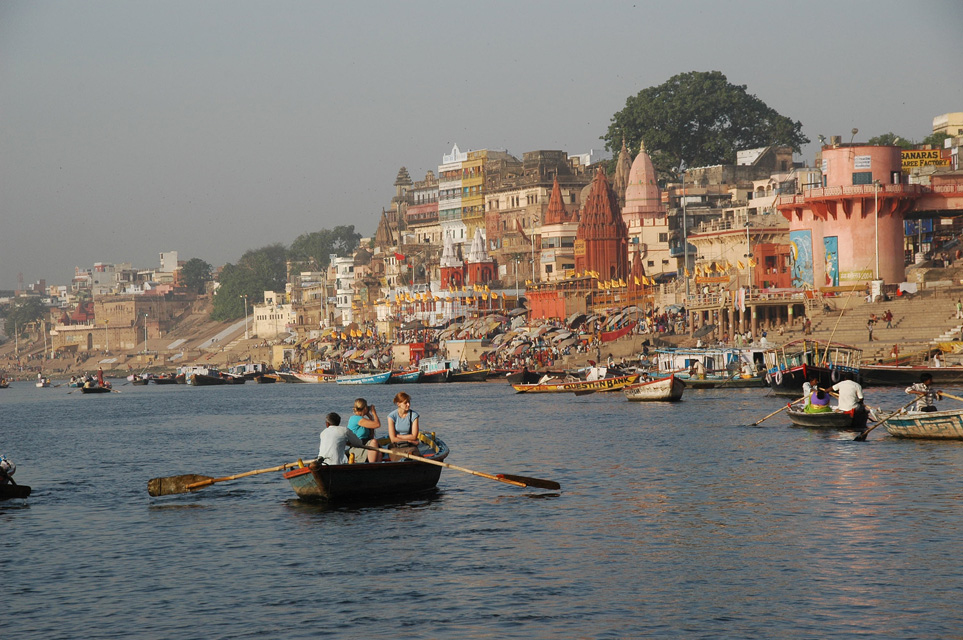Kashi & River Ganga
It is being said that, right from the Himalayan mountains to the Bay of Bengal, the River Ganga flows 2,700 km in northern India and Bangladesh. It is regarded as sacred by Hindus; the river is personified as the goddess Ganga in ancient scriptures and art. Ritual bathing in the Ganges is an important part of Hindu pilgrimage along with the Asthi Visarjan in Varanasi, where the ashes of the cremated are often spread across the waters for the departed to attain moksha or salvation. You can perform Asthi Visarjan and other Pitrukaryas in Varanasi with the best Pandit services in Varanasi. River Ganga in Varanasi acquired a great significance as a sacred river. As the river Ganga flows from the head of Shiva, the waters of this sacred river have the powerful quality to wash-off all the impurities including past sins. You can also perform the famous Hindu ritual after death – Pind Daan with the best pandits for Pind Daan in Gaya and Varanasi.


There is an age-old relation between Kashi, Ganga and Lord Shiva. There are many stories about Gangaji, the most important one about Ganga’s ascendance to earth. According to puranas and ancient texts, Ganga used to flow in heavens. It was brought to earth by the penances of a sage named Bhagirathi. He was the king of Kosala and a descendant of King Sagara. He wanted to rescue his 60,000 ancestors who were stuck in patala or underworld. It is said that once Sagara performed a horse sacrifice to conquer new territories.
After performing the sacrifice, he set the horse free. According to the tradition, wherever the horse went, that territory would be taken by the kingdom, unless it was challenged by the rival king and defeated. As soon as the horse was set free it ran to open lands and kings’ men followed it. In due course of time, it disappeared and could not be traced by the king’s men. They went back and reported to the king. Upon knowing the news, the king deputed his 60,000 sons to find the horse and bring it back. His sons searched for the horse for a long time and finally found it in the Ashram of Sage named Kapila. They saw the horse tied to a pole and the sage was nearby in deep meditation. With ascertaining the facts, assuming the sage has stolen the horse, the sons hastily attacked the sage who was in meditation.


The sage got disturbed by their actions and so strong was his spiritual power, which radiated from his eyes, as soon as his gaze fell upon them; they were burnt and instantly turned into ashes. After the event, the sage felt remorse and conveyed the news to Sagara and suggested that his sons could be revived only if the waters of Ganga flowed over their ashes and purified them. Since the river flowed in heaven, someone had to undertake a strong penance in an effort to bring her to the earth. The descendants of Sagara tried for a very long time to complete this task but failed. On the other hand, there was no one coming to save the souls of their ancestors who were stuck in the underworld. Meanwhile, the Kosala kingdom lost its former glory by facing bad times. However, Bhagiratha took birth and decided to solve the major problem that has been affecting his family for generations and also to save his ancestors.
He undertook great penance to seek the help of gods and persuade the goddess Ganga to flow upon the earth. For a thousand years, he performed austerities. Brahma believed that Shiva was the only one who has the ability to solve this problem. So, he appeared in front of Bhagiratha and urged him to appease Lord Shiva. As per the suggestion of Brahma, Bhagiratha meditated upon Lord Shiva. Pleased by his sincerity, Shiva appeared before him and promised to help him.
He summoned the gods and requested them to persuade the goddess to turn to earth. Firstly, she hesitated to come on earth as she felt that the earth does not have the strength to bear the intensity of her spiritual powers. Lord Shiva has suggested that it would be safe if the river first descended upon his head so that he can absorb her uncontrolled force of water and make her flow from the tied-knot of his hair onto the earth with decreased capacity.
The force was so powerful that as soon as she landed upon his head, her flow broke into seven substreams, which became tributaries. Among the seven substreams, three substreams flowed to the east and the other three to the west. The seventh one, which goes today by the name Ganga, followed Bhagiratha to the place where the ashes of his ancestors lay. As the seventh stream called Ganga river flowed over the ashes, they instantly achieved liberation. According to Hindu mythology, it is better to perform Varanasi rituals or Pitrukaryas for the deceased ancestors in the family with the best purohit services in Varanasi, so that the departed souls attain moksha.

